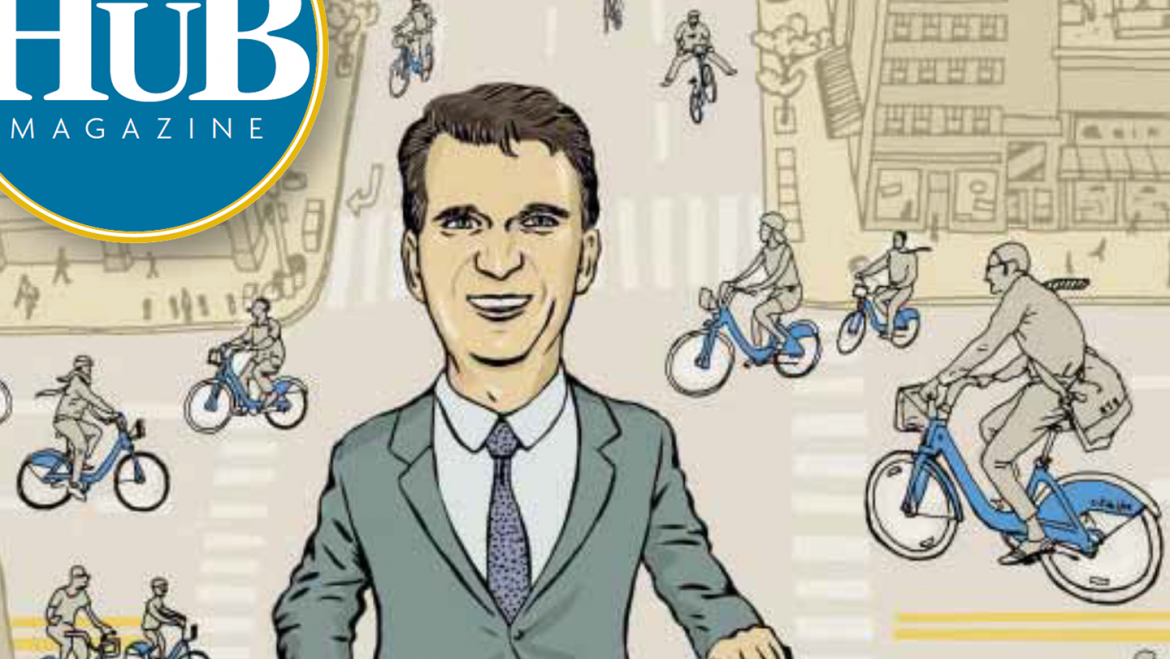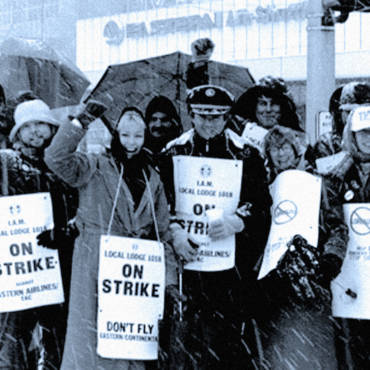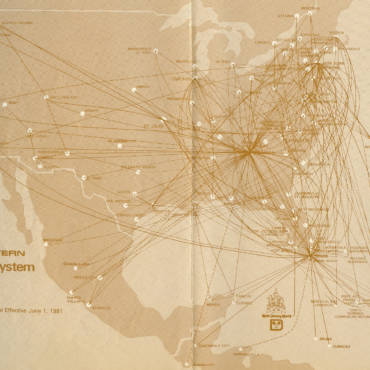Reputable Capital
By John Patterson & Anthony Johndrow
Written for The Hub
The world has changed since the 2008-09 financial crisis. A 2013 Reputation Institute/Forbes study found almost 60 percent of US consumer support for a company (recommend, say something positive, benefit of the doubt in a crisis) comes from what the company stands for (ideas around governance, workplace, leadership, citizenship and performance) compared to roughly 40 percent stemming from what it sells (product and innovation perceptions).
In the business-to-business world, a 2013 Corporate Executive Board (CEB) study reported the four top value-drivers of customer loyalty are 53 percent sales experience, 19 percent company/brand impact, 19 percent product/service capability & delivery and nine percent value-to-price ratio.
A company’s reputation is its most meaningful metric.
At the same time, ‘corporate social responsibility’ has become passé. Gone are the intellectual debates between Milton Friedman disciples (“the social responsibility of business is to increase its profits”) and the triple bottom line (“people, planet, profits”) crowd.
Today’s citizenship call-to-action is about building sustainable businesses: Alfredo Martel of Caribou Coffee, Steve Phelps of NASCAR and Mark-Hans Richer of Harley-Davidson all showed ways in which they are connecting the company behind their namesake products to drive incremental value at the inaugural Hub Brand-Experience Symposium last September.
Think about the soulfulness of Caribou’s ‘Drink Up Life’ campaign in the wake of being acquired by a German holding company. Or NASCAR buying back its digital rights from Turner to reclaim its heritage in order to win the future (see page 20). Take Harley Davidson’s cross-promotion with the Vatican on the occasion of Harley’s 110th anniversary and the visual of thousands of Harley riders in Rome with Pope Francis taking a ride in St. Peter’s Square.
Beyond these Hub Live keynotes and headlines, Novo Nordisk and Pirelli are also among the companies demonstrating that reputation is a more proven (and predictive) metric to understand the multi-stakeholder ecosystem impact of things like sponsorship (Pirelli) and sales-force effectiveness (Novo) that foster greater accountability and responsibility at the c-suite and Board of Director levels.
Pirelli is the fifth-largest tire manufacturer in the world, with a rich history of sponsorships since 1907. From soccer leagues and clubs in Italy, China, and Latin America, to various motorsports deals (including the FIM World Superbike Championship and multiple Formula One teams), Pirelli has always been on the forefront of marketplace activation.
Of course, sport is not the only arena tire companies have explored to raise their brand profile. Pirelli has established a heritage in high-end fashion with its PZero clothing range and its famous ‘top models’ calendar, while rival Michelin’s guidebooks are well-known authorities on food and travel. Whatever ground they choose, premium-tire brands clearly feel a need to mark territories beyond tires, but such activities are long-term investments with often intangible returns. The average motorist only buys tires every two or three years, so sponsorship activity is about building long-term brand awareness and reputation capital rather than creating a sales spike.
Furthermore, Pirelli is five times smaller than #1 Continental and #2 Bridgestone, and three times smaller than #3 Michelin and #4 Goodyear, and must ‘work smarter, not harder’ in terms of sponsorship investments.
After a 20-year absence, Pirelli returned to the pinnacle of motorsport in 2011 with an exclusive contract to supply all Formula One teams with its latest range of Formula One tires. This wasn’t a brand heritage play at all; it was a growth play for Pirelli to go commercial with its corporate reputation and build out incremental brand ambassadors and potential new customers throughout the Formula One ecosystem across the globe.
By the end of the 2012 season, Pirelli met four commercial Key Performance Indicators relative to seven different Formula One activation programs that went well beyond product features and benefits. During the season, seven corporate functions at Pirelli — Marketing, Investor Relations, Advertising and Media, Human Resources, Product Development, Culture and Corporate Governance — are graded on their contribution/leverage of Pirelli’s intangible assets (including reputation).
Driven primarily by the increased exposure to the 550 million fans who watch Formula One around the world, Pirelli improved its reputation across the 15 largest economies with the general public to a strong 71.19 by 2013 — which placed it at #33 on the RI/Forbes World’s 100 Most Reputable Companies, edging out Continental to earn fourth place among tire manufacturers.
What was more interesting to Pirelli was where that reputation capital translated into more support than its competitors. Even though 51 percent of global consumers indicated they would buy Pirelli tires and 47 percent said they would recommend Pirelli products and services to others in 2013, this global support still lagged behind Michelin, Bridgestone and Goodyear. But in select key Formula One growth markets like Brazil (81% buy, 77% recommend), India (56% buy, 59% recommend), Mexico (73% buy, 71% recommend) and Russia (67% buy, 61% recommend), Pirelli is starting to make its presence felt with an emerging middle class through its unique relationship with Formula One.
Pirelli’s foray into Formula One is still more focused on quality and heritage than the buying process. It is particularly good at creating interest and awareness because the tires are responsible for delivering most of the unpredictability and excitement in the sport.
True story: For the 2012 season, the sport’s governing body, the FIA, tasked Pirelli with designing tires that actually break up before the end of the race. This means teams need to choose tactically when to change tires on each car, creating added tension for fans but a potential reputation headache for Pirelli. Armed with predictive analytics, Pirelli is much better able to weather the storm during each race and build a more resilient reputation around the world through its ambassadorship efforts via its seven Formula One activation programs.
Novo Nordisk has been at the differentiation game inside the pharmaceutical industry for about a decade with its determination to compete based on its corporate values and culture (while all rivals spent billions differentiating only their products).
Novo’s desire to ‘Change Diabetes’ — not just provide pharmaceutical treatments — has shaped its business strategy and public image since the mid-2000s. Internally, Novo tasked its 30,000 employees to live the company’s vision in three ways: 1) to actively and continuously work to change the course of the diabetes pandemic; 2) improve the daily lives of people with diabetes; and 3) expand the possibilities for people living with hemophilia. Externally, Novo wanted to create a sense of urgency with the global diabetes epidemic, and needed advocates to transform the debate from a clinical one to a moral one.
In 2009, Novo’s Changing Diabetes World Tour crossed five continents and visited 12 countries with a final destination of New York on World Diabetes Day to get diabetes on the United Nations agenda. The Changing Diabetes platform was able to find new solutions for sustainable health policy development (by facilitating dialogue and building consensus), shock the world out of its denial (making the campaign a ‘burning platform’), promoting increased measurability and transparency by working with advocates (providing a convincing case) and impacting sustainable change (through best-practice sharing with stakeholders).
Since the 2008 financial crisis, Novo has added more than $60 billion to its market capitalization (more than six times its revenue of $14 billion) and enjoyed a profit-to-earnings ratio substantially higher than its larger Big Pharma competitors. This cannot all be explained by analyst confidence in its drug pipeline; it is also the result of Novo getting credit for playing offense with its strong corporate reputation amidst a ‘sea of sameness’ in a reputation-challenged industry.
Case in point: Novo’s US market share has spiked and growth has continued at a double-digit pace since it brought Changing Diabetes to this hyper-competitive prescribing physician landscape. Product innovation has been part of this market success story, but a large part of it has been Novo’s ability to deploy its true differentiator (its character) in a physician-to-patient sales environment.
Another sales and marketing channel that Novo uses expertly in the US is its multi-level IZOD IndyCar partnership. As the event’s official diabetes-care provider, emergency-care vehicle sponsor, and sponsor of driver Charlie Kimball (who suffers from diabetes), it is clear to Novo’s entire stakeholder ecosystem that the Danish market leader is in it to win it when it comes to winning the race for a cure for diabetes.
Charlie Kimball’s inspirational story for the 26 million Americans who suffer from diabetes is in some ways a perfect metaphor for Novo Nordisk’s battle for attention and relevance against Big Pharma. Kimball, who began racing go-karts at age nine, was accepted into Stanford University and chose to bypass admission to follow his dream to become a race-car driver.
In 2007, Kimball was diagnosed with type-1 diabetes and forced to abandon his racing program mid-season. After his surprising diagnosis, Kimball returned to the cockpit in 2008 and claimed a podium finish in his first race. Today, Kimball continues to compete in one of the most competitive racing categories in the world, proving that living with diabetes does not have to restrict him from traveling at speeds of more than 200 miles an hour and fulfilling his dream.
As further testament to his standing in the diabetes community, Kimball partners with Novo Nordisk to raise awareness of the importance of properly managing blood glucose levels and to demonstrate that diabetes can be successfully integrated into one’s life and ambitions. As part of the partnership, Kimball makes frequent appearances on behalf of the company (especially during the offseason — November is Diabetes Awareness Month) and helps spread awareness of diabetes year round.
Kimball and Novo made headlines by sending the first pharmaceutical-branded tweet in 2009 via their @racewithinsulin account. This helps personify Novo’s Changing Diabetes reputation platform through tweets about direct experiences at tracks and hospitals; what Novo says and does (a blend of cause-related and sports-marketing messages); and third-party conversations about Charlie Kimball (from patient support groups to medical school alumni to Non-Governmental Organizations seeking to reward Novo for being a ‘good guy’ in the marketplace).
The Reputation Imperative
As the return on traditional product advertising declines, chief marketing officers are left looking to new tools (online, social media, etc.) for their salvation. But it’s about much more than tools. People care about the companies behind the products and services they purchase. The opportunity is to leverage the company as a strategic asset to drive sales and market share.
Reputation measures are one good way to keep score, but the discipline of rigorously analyzing what matters about your company to your customers opens up new competitive arenas. Today’s chief reputation officer (whether chief marketing or chief communications officer, or a hybrid) has the opportunity to drive competitive advantage by connecting the corporation to its stakeholders in relevant ways that simply didn’t exist a decade ago.
From both personal reputation and corporate reputation points-of-view, marketers cannot afford to play along with ‘corporate social responsibility’ business-as-usual any longer. It’s clear that boards of directors aren’t interested in ‘reputation for reputation’s sake.’ Driving business results are the name of the game — and reputation’s impact on employee and customer acquisition and retention are far from academic.




Add Comment